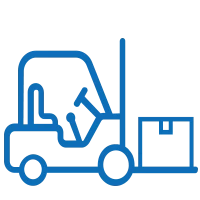Why the right tool is more than just a nice to have.
Why customisation is more than a novelty
Abstract
Custom-designed products often provide an elevated experience that, in some cases, can be more of a needless luxury or even a novelty than a targeted function. Seemingly frivolous customisation is common in consumer-facing industries, such as Porsche offering over 160 paint colours to promote individualisation, and Samsung marketing its latest bespoke appliances on personal style and luxury. Back in 1999, Nike pioneered the concept of mass customisation with the NikeiD platform, which empowers customers to personalise their shoes for comfort, colour and style. With these examples in mind, it might seem difficult to reconcile customisation with the careful cost management and tight budgets typical of warehouses, distribution centers and other logistics facilities.
In reality, customisation can actually generate both upfront and long-term savings. One-size-fits-all solutions can lead operations to waste money by purchasing excess features or sacrificing productivity with a solution not optimised for the task at hand. At a basic level, customisation provides a hyper-specific tool, purpose built for a certain task, as illustrated by a standard wrench compared to a torque wrench meant to excel at a specific function. In logistics, customisation choices are driven by carefully studying workflows and selecting the best tools to support overall effectiveness and efficiency. Choosing only the standard options could do more harm than good if equipment is not properly equipped for the task at hand – risking premature wear, greater expense or limited productivity


